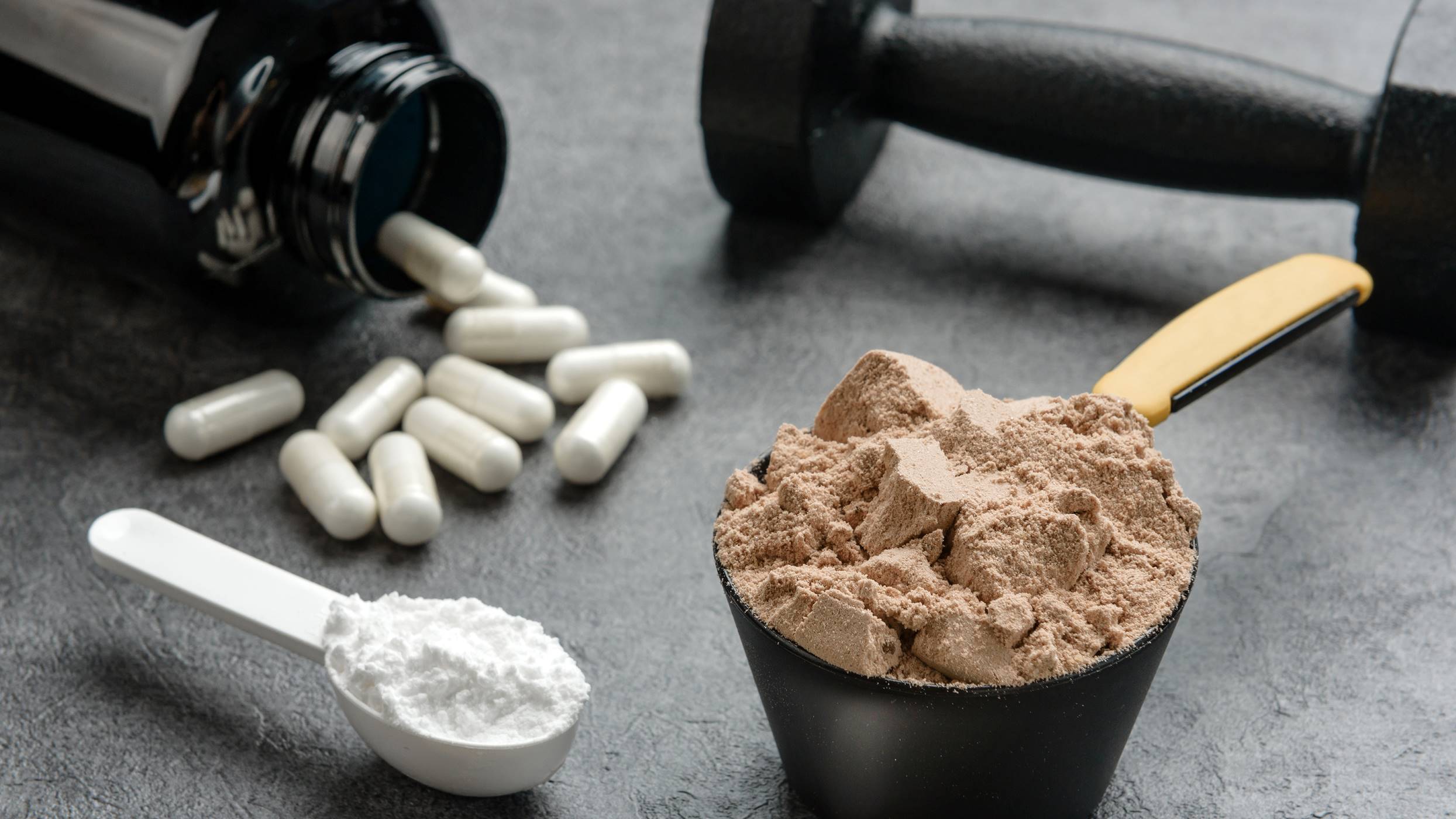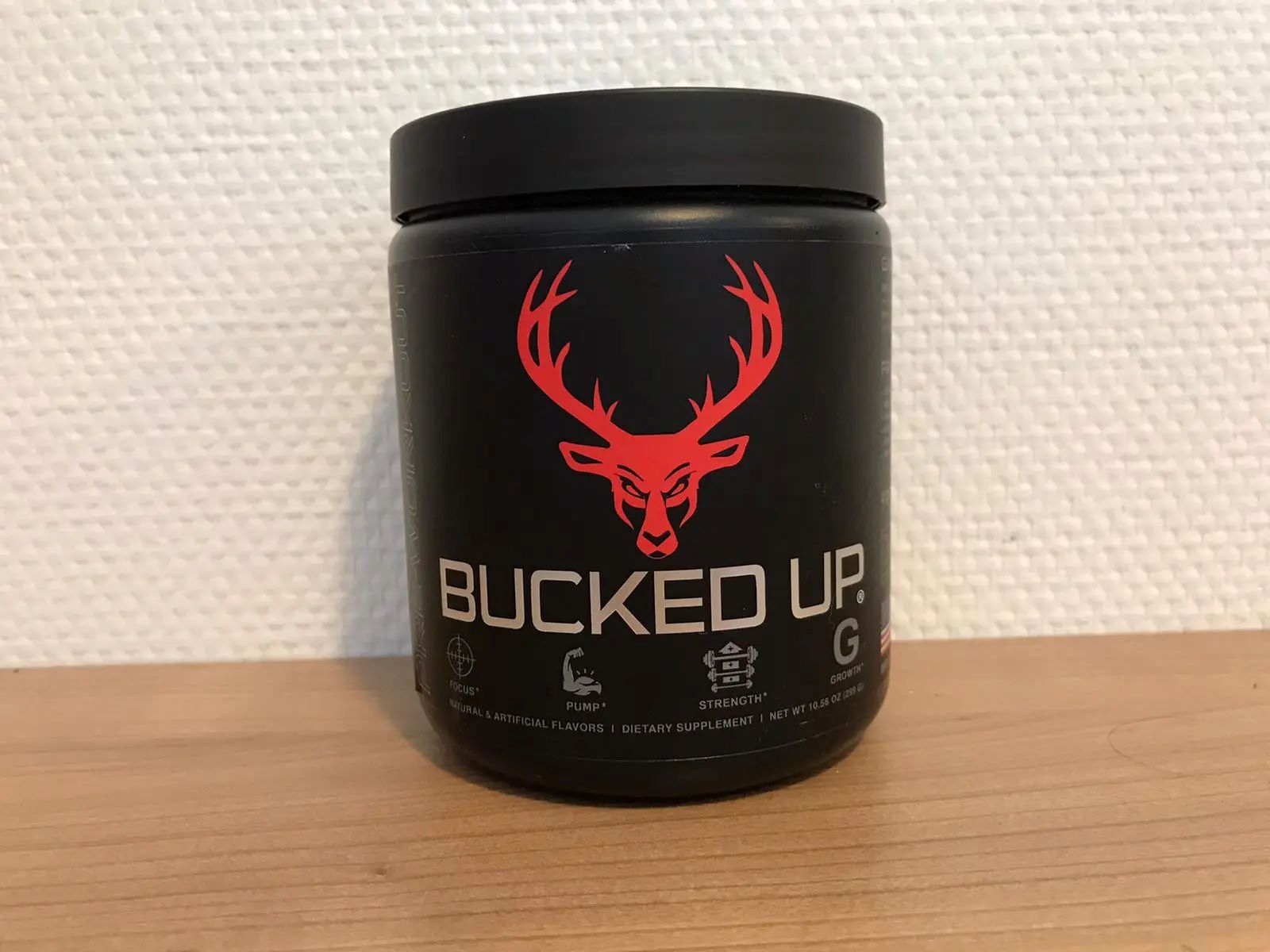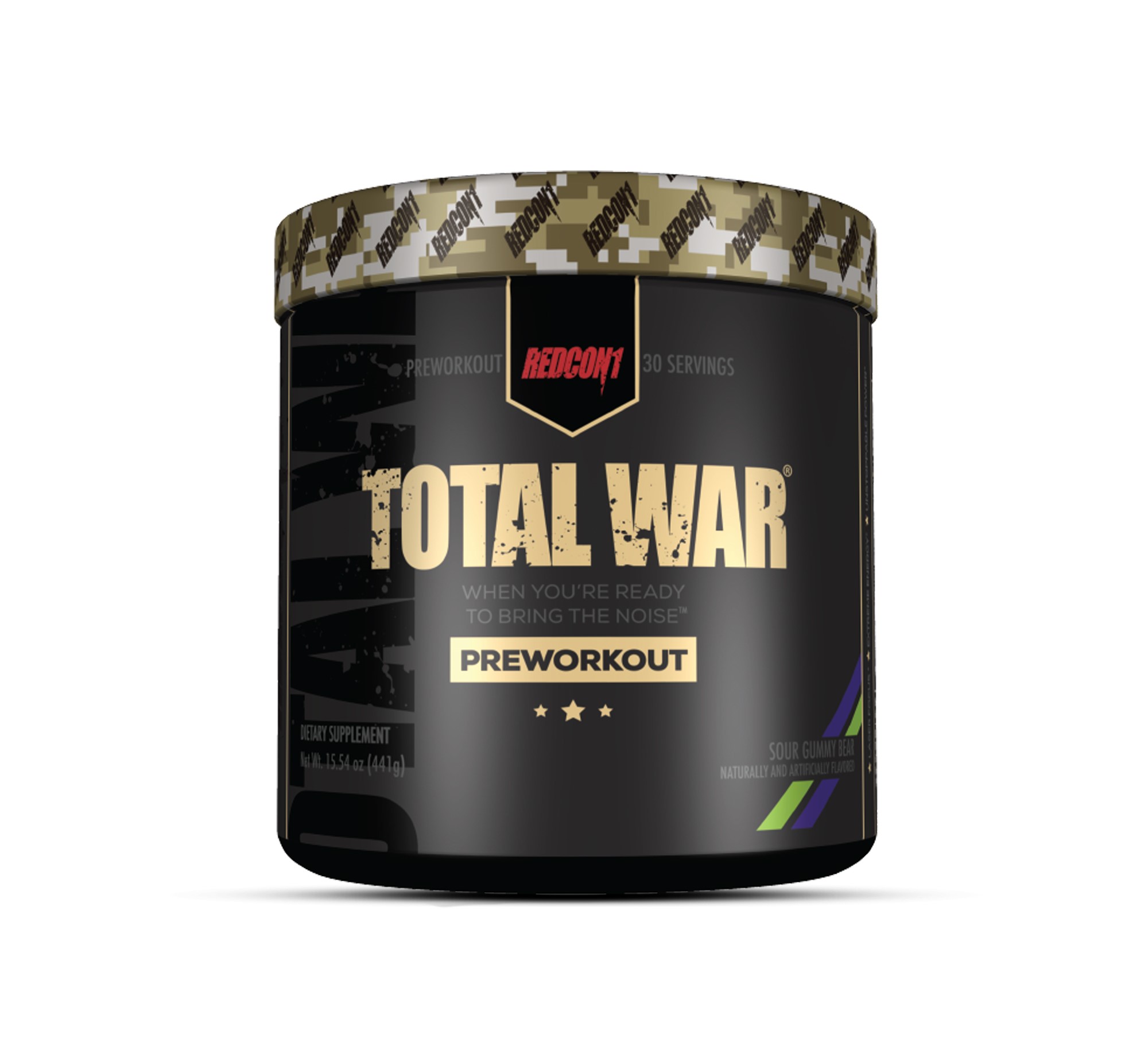Home>Misc>Featured>How Much Caffeine Is In Bloom Pre-Workout


Featured
How Much Caffeine Is In Bloom Pre-Workout
Modified: August 21, 2023
Discover the amount of caffeine in Bloom Pre-Workout, a featured supplement known for its energy-boosting benefits. Find out how much caffeine will power your workouts!
Introduction
When it comes to preparing for a workout, many fitness enthusiasts turn to pre-workout supplements to enhance their performance and energy levels. One popular option is Bloom Pre-Workout, known for its potent blend of ingredients designed to boost focus, endurance, and strength.
However, one specific component in pre-workout supplements that often grabs attention is caffeine. Caffeine is a naturally occurring stimulant that can provide a temporary increase in energy and alertness. It has been widely studied for its potential benefits in exercise performance.
For those who are sensitive to caffeine or want to monitor their intake, it is crucial to understand how much caffeine is in Bloom Pre-Workout. This information allows users to make informed decisions about their consumption and tailor it to their individual needs and preferences.
This article aims to provide a comprehensive understanding of the caffeine content in Bloom Pre-Workout, the importance of knowing the caffeine levels, and the potential effects of caffeine on exercise performance.
Before delving into the caffeine content, let’s first explore the composition and purpose of Bloom Pre-Workout.
Understanding Bloom Pre-Workout
Bloom Pre-Workout is a popular supplement in the fitness community known for its powerful blend of ingredients aimed at optimizing physical performance during workouts. This pre-workout supplement is carefully formulated to provide a boost of energy, enhance focus, and improve endurance.
The primary purpose of Bloom Pre-Workout is to maximize the benefits of exercise by increasing energy levels and reducing fatigue. This allows individuals to push themselves further and train at a higher intensity, ultimately leading to improved performance and results.
Bloom Pre-Workout contains a combination of key ingredients that work synergistically to deliver these benefits. One of the key components is caffeine, which acts as a stimulant and plays a vital role in increasing alertness and reducing perceived effort during exercise.
In addition to caffeine, Bloom Pre-Workout often includes other ingredients such as beta-alanine, creatine, and citrulline malate. Beta-alanine helps to improve endurance by reducing muscle fatigue, while creatine supports the production of ATP, the primary energy source for muscle contractions. Citrulline malate aids in enhancing blood flow and the delivery of nutrients to working muscles.
By combining these ingredients, Bloom Pre-Workout aims to provide users with a powerful and effective supplement that enhances their overall workout experience. The specific formulation may vary between different brands and products, but the underlying goal remains the same – to optimize performance and yield better results.
It is important to note that while Bloom Pre-Workout can be a valuable tool for those looking to enhance their workouts, it should not replace a balanced diet and proper training regimen. It is always advisable to consult with a healthcare professional or fitness expert before incorporating any new supplements into your routine.
Now that we have a solid understanding of Bloom Pre-Workout, let’s delve into the significance of knowing the caffeine content in this supplement.
Importance of Knowing Caffeine Content
Understanding the caffeine content in Bloom Pre-Workout is crucial for several reasons. First and foremost, caffeine is a stimulant that can have varying effects on individuals. Some people may be more sensitive to its effects, while others may have a higher tolerance.
By knowing the caffeine content, users can better gauge and adjust their intake based on their personal preferences and sensitivities. This ensures that they are not consuming excessive amounts that could lead to unwanted side effects such as restlessness, jitters, or sleep disturbances.
Caffeine is also known to have a half-life, which refers to the amount of time it takes for the body to eliminate half of the caffeine consumed. Understanding the caffeine content can help users plan their supplementation strategically, considering factors such as the timing of their workouts and their sleep patterns.
Another important consideration is being aware of the caffeine content in Bloom Pre-Workout when combining it with other sources of caffeine. For example, if someone regularly consumes coffee or energy drinks throughout the day, taking a pre-workout supplement with a high caffeine content on top of that could lead to an excessive caffeine intake.
Moreover, knowing the caffeine content allows individuals to stay within the recommended daily caffeine limit. The FDA suggests that most healthy adults can consume up to 400 milligrams of caffeine per day, which is roughly equivalent to four cups of coffee. By being aware of the caffeine content in Bloom Pre-Workout, users can better manage their overall caffeine intake and ensure that they are not exceeding this limit.
For those who are sensitive to caffeine or have certain medical conditions, such as high blood pressure or heart problems, it becomes even more important to know the caffeine content. Consulting with a healthcare professional can help determine the appropriate amount of caffeine to consume.
In the next section, we will explore how the caffeine content in Bloom Pre-Workout is measured and the results of caffeine content analysis.
Measuring Caffeine in Bloom Pre-Workout
Accurately measuring the caffeine content in Bloom Pre-Workout is a crucial step in providing users with transparent information about the supplement. To determine the caffeine levels, manufacturers typically employ laboratory testing methods.
High-performance liquid chromatography (HPLC) is one of the most commonly used techniques for caffeine analysis. This method involves separating and quantifying caffeine from the other components present in the pre-workout supplement.
During the analysis, a sample of Bloom Pre-Workout is prepared and injected into the HPLC system. The sample undergoes separation via a column, where caffeine molecules are separated and identified based on their retention time.
The retention time is then compared to known caffeine standards to accurately determine the caffeine content in the supplement. This analysis provides a quantitative measurement of caffeine, allowing manufacturers to list the precise amount on the product label.
It is important to note that the caffeine content can vary among different batches and even between different flavors of Bloom Pre-Workout. This is why it is important to check the label or reach out to the manufacturer for the most up-to-date information on caffeine content.
By having access to the measured caffeine content, users can make informed decisions about their supplementation and adjust their intake according to their individual needs. It allows for a personalized approach, ensuring that users are aware of how much caffeine they are consuming before their workouts.
Having discussed the methods used to measure caffeine content in Bloom Pre-Workout, let’s move on to the next section where we will explore the results of caffeine content analysis.
Results of Caffeine Content Analysis
The results of caffeine content analysis in Bloom Pre-Workout can vary depending on the specific product and batch. Manufacturers often provide this information on the product label or through their official website.
According to recent caffeine content analyses, Bloom Pre-Workout typically contains around 200-300 milligrams of caffeine per serving. However, it is important to note that these values may fluctuate and could be different for different flavors or variations of the supplement.
These results indicate that Bloom Pre-Workout contains a moderate to high amount of caffeine compared to other pre-workout supplements on the market. It is essential for users to consider their caffeine tolerance and overall daily caffeine intake before consuming Bloom Pre-Workout.
By having access to the precise caffeine content of Bloom Pre-Workout, individuals can make informed decisions about their supplementation and tailor their intake based on their own preferences and needs. Some users may opt for a full serving to maximize the energizing effects of caffeine, while others may choose to consume a smaller portion to modulate their overall caffeine intake.
It is worth mentioning that the caffeine content analysis provides a valuable reference point, but individual experiences may vary. Factors such as metabolism, body weight, and caffeine sensitivity can influence how individuals respond to the same amount of caffeine.
Moreover, it is crucial to follow the recommended serving size and not exceed the stated dosage to avoid any potential side effects associated with excessive caffeine consumption.
In the next section, we will compare the caffeine levels in Bloom Pre-Workout to the recommended daily intake of caffeine.
Comparing Caffeine Levels to Recommended Daily Intake
Understanding how the caffeine levels in Bloom Pre-Workout compare to the recommended daily intake is essential for managing caffeine consumption effectively.
The Food and Drug Administration (FDA) suggests that most healthy adults can safely consume up to 400 milligrams of caffeine per day. This amount is equivalent to approximately four cups of coffee.
Considering the typical caffeine content of Bloom Pre-Workout, which falls in the range of 200-300 milligrams per serving, it is important to take into account other sources of caffeine consumed throughout the day.
If an individual consumes a single serving of Bloom Pre-Workout, they will have already reached about half of the recommended daily caffeine limit. This means that additional sources of caffeine, such as coffee, tea, or energy drinks, may put them at risk of exceeding the recommended daily intake.
Therefore, it is crucial for individuals to be mindful of their overall caffeine intake and consider it holistically. Regularly consuming multiple servings of Bloom Pre-Workout or combining it with other caffeinated beverages can lead to excessive caffeine consumption and potential adverse effects.
Listening to one’s own body and paying attention to any signs of caffeine sensitivity is also important. Some individuals may experience side effects, such as restlessness, jitters, increased heart rate, or disrupted sleep, when consuming high amounts of caffeine. Adjusting the intake accordingly is recommended to avoid these potential issues.
Additionally, certain individuals, such as those with certain medical conditions or sensitivities, may need to limit their caffeine intake even further and consult with a healthcare professional for specific recommendations.
Ultimately, understanding the caffeine content in Bloom Pre-Workout and comparing it to the recommended daily intake allows individuals to make informed decisions about their overall caffeine consumption and ensure they stay within safe and healthy limits.
Now, let’s explore the potential effects of caffeine on exercise performance in the next section.
Effects of Caffeine on Performance
Caffeine has been widely studied for its potential benefits on exercise performance. It is known to have both physiological and psychological effects that can enhance various aspects of physical performance.
One of the primary ways caffeine improves performance is by stimulating the central nervous system, resulting in increased alertness and reduced perceived exertion. This can lead to improved focus, concentration, and mental clarity during workouts.
Caffeine has also been shown to enhance muscular endurance, allowing individuals to sustain high-intensity activities for longer durations. It does this by reducing feelings of fatigue and delaying the onset of muscle exhaustion.
Moreover, caffeine can increase the oxidation of fat during exercise, making it an effective tool for individuals looking to enhance their fat-burning capabilities and improve body composition.
Studies have demonstrated that caffeine can improve anaerobic performance as well. It has been shown to enhance power, strength, and speed, making it beneficial for activities requiring short bursts of intense effort, such as sprinting or weightlifting.
It’s important to note that the effects of caffeine can vary depending on individual factors, such as genetics, tolerance, and sensitivity. While some individuals may experience significant performance improvements, others may not see as pronounced of an effect.
Furthermore, it is crucial to incorporate caffeine into a well-rounded training and nutrition plan. It should complement a healthy lifestyle and not be relied upon as a sole means of enhancing performance.
While caffeine can provide performance benefits, it is essential to use it responsibly and avoid excessive consumption. Too much caffeine can lead to jitteriness, restlessness, increased heart rate, and disrupted sleep patterns. Finding the right balance and adjusting the intake based on individual tolerance is key.
Now that we have explored the potential effects of caffeine on performance, let’s move on to the next section to discuss precautions and considerations when using Bloom Pre-Workout.
Precautions and Considerations
While Bloom Pre-Workout and caffeine can offer benefits for exercise performance, it is essential to take precautions and consider certain factors before using this supplement:
1. Individual Sensitivity: Every individual has a different tolerance and sensitivity to caffeine. It is important to be aware of how your body responds to caffeine and adjust your intake accordingly. If you are sensitive to caffeine or have certain medical conditions, it is advisable to consult with a healthcare professional before using Bloom Pre-Workout.
2. Timing of Consumption: The timing of when you consume Bloom Pre-Workout is crucial. Taking it too close to bedtime can interfere with sleep patterns, leading to restlessness and insomnia. It is recommended to avoid consuming caffeine within 4-6 hours before intending to sleep.
3. Other Sources of Caffeine: Keep in mind that Bloom Pre-Workout is not the only source of caffeine in your daily routine. If you consume other caffeinated beverages or supplements, it is essential to add up the total amount of caffeine to ensure you stay within safe limits.
4. Hydration: Caffeine is a diuretic, which means it can increase urine production and potentially contribute to dehydration. It is crucial to ensure adequate hydration by consuming enough water throughout the day, especially during workouts when using Bloom Pre-Workout.
5. Personal Goals and Needs: Consider your specific fitness goals and training needs before using Bloom Pre-Workout or any other pre-workout supplement. Consulting with a fitness professional can help determine if this supplement aligns with your objectives and whether other alternatives might be more suitable for you.
6. Cycle Usage: To prevent becoming desensitized to the effects of caffeine, it is often recommended to cycle the use of pre-workout supplements, including Bloom Pre-Workout. Taking periodic breaks from caffeine-containing products can help maintain its effectiveness over time.
By taking these precautions and considerations into account, individuals can safely incorporate Bloom Pre-Workout into their exercise routine and maximize its benefits while minimizing potential risks.
Now, let’s conclude the article with a summary of the key points discussed.
Conclusion
Bloom Pre-Workout is a popular supplement that aims to enhance exercise performance by providing a combination of ingredients, including caffeine. Understanding the caffeine content in Bloom Pre-Workout is essential for individuals to make informed decisions about their supplementation and manage their overall caffeine intake.
Caffeine, a stimulant, has been shown to have several potential benefits on exercise performance, including increased alertness, reduced fatigue, improved endurance, and enhanced anaerobic performance. However, individual responses to caffeine may vary, and it is important to consider factors such as tolerance, sensitivity, and overall daily caffeine intake.
To accurately measure the caffeine content in Bloom Pre-Workout, manufacturers use laboratory testing methods such as high-performance liquid chromatography (HPLC). The results of caffeine content analysis indicate that Bloom Pre-Workout typically contains around 200-300 milligrams of caffeine per serving, varying between different flavors and batches.
When comparing the caffeine levels to the recommended daily intake of 400 milligrams, it is crucial to consider other sources of caffeine consumed throughout the day. Monitoring caffeine intake and being aware of individual sensitivity are important for preventing excessive consumption and potential side effects.
Additionally, precautions and considerations should be taken into account when using Bloom Pre-Workout or any other pre-workout supplement. These include individual sensitivity, timing of consumption, hydration, and personal fitness goals.
Overall, by understanding the caffeine content in Bloom Pre-Workout and its potential effects on performance, individuals can make informed decisions about their supplementation and tailor their intake to suit their needs effectively. It is important to use caffeine-containing products responsibly and in conjunction with a balanced diet, proper hydration, and a well-rounded exercise routine.
Remember to consult with a healthcare professional or fitness expert before incorporating any new supplements into your routine, especially if you have any underlying health conditions or concerns about caffeine consumption.
With the right knowledge and cautious approach, Bloom Pre-Workout can be an effective tool in optimizing your workouts and helping you reach your fitness goals.









